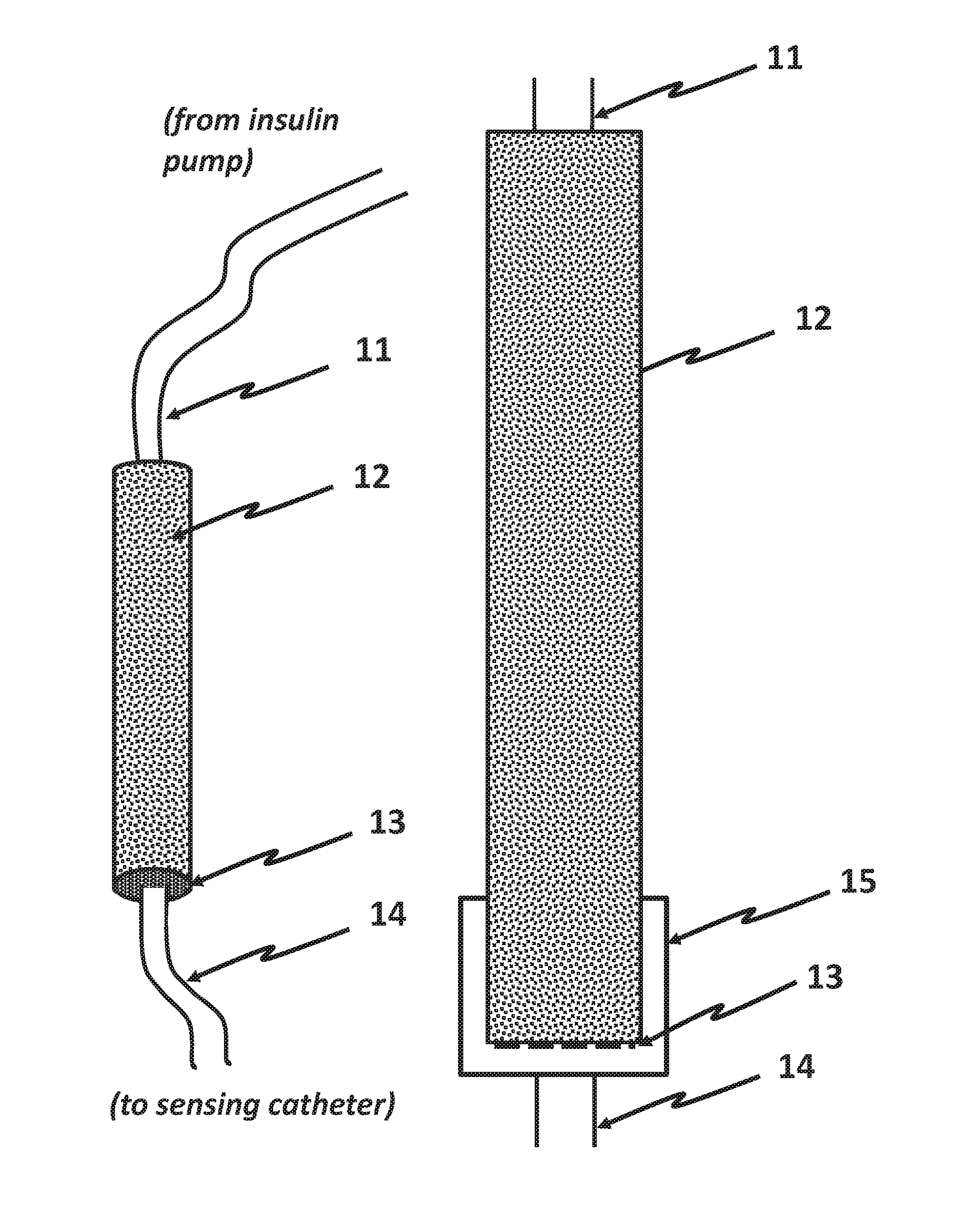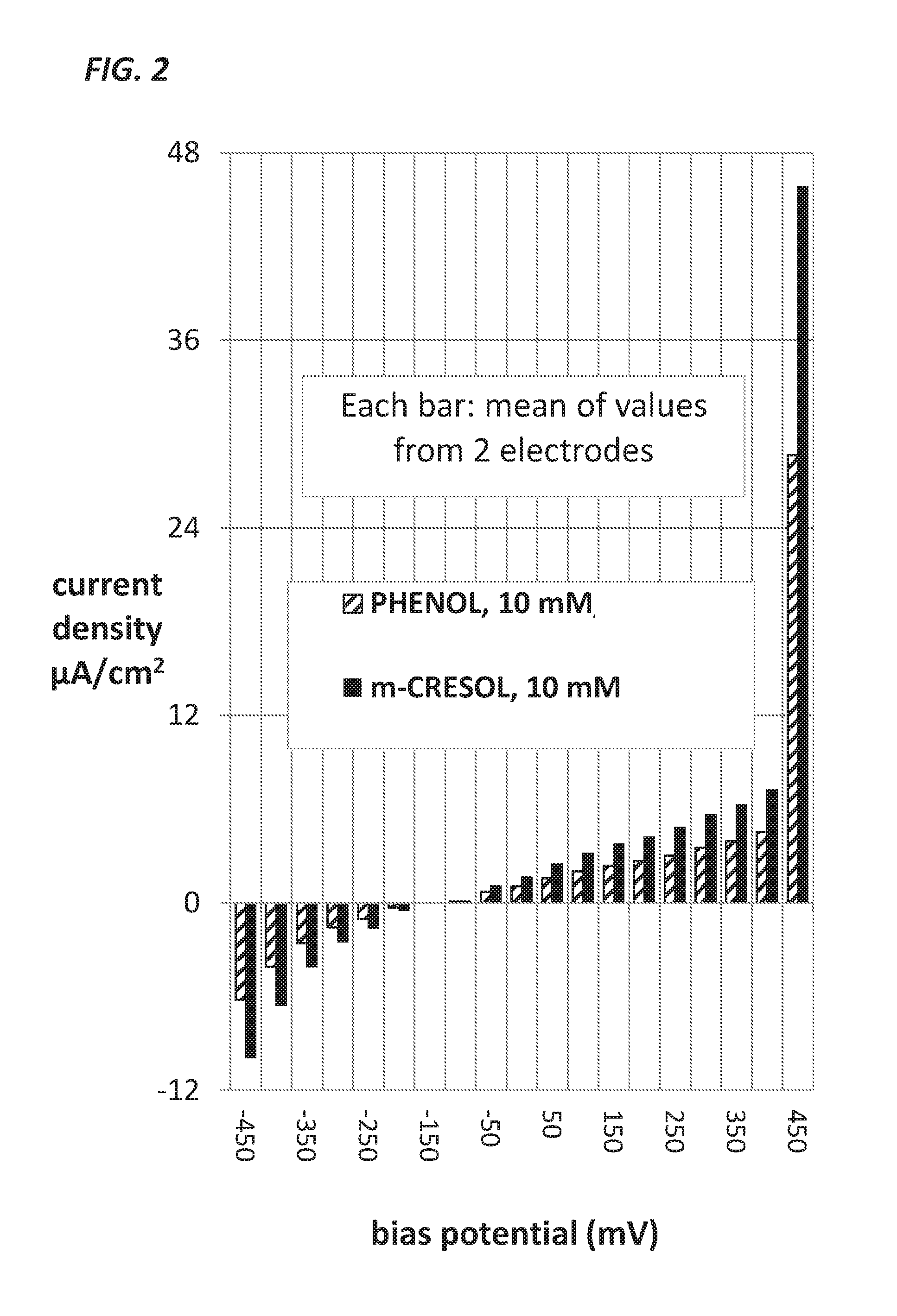Measurement of Glucose in an Insulin Delivery Catheter by Minimizing the Adverse Effects of Insulin Preservatives
a technology of insulin delivery catheter and glucose measurement, which is applied in the direction of catheter, application, diagnostic recording/measuring, etc., can solve the problems of insufficient glucose current, device failure to function properly, and electrode film failure to be robust and durable, so as to avoid this fragility and minimize cost
- Summary
- Abstract
- Description
- Claims
- Application Information
AI Technical Summary
Benefits of technology
Problems solved by technology
Method used
Image
Examples
example 1
Redox Mediator-Based Sensing Catheter
[0061]Laminate Metal Foil to Polymer Substrate:
[0062]Purpose: This step creates a laminate of titanium and polyimide (Ti / Pi). In this example, the Ti thickness is 5 μm and the polyimide thickness is 12.5 μm, though these dimensions should not be construed as limiting. This example creates a laminate rectangle whose dimensions are 60 mm×85 mm.
[0063]Materials include Deionized water; Polyimide sheet w / B-stage acrylate adhesive; Titanium foil; press pads; Teflon sheets, and graphite press plates, Heated hydraulic press capable of achieving 400 deg F.;
[0064]Plate setup process: Between the caul (pressure-applying) plates of the hydraulic press, materials should be stacked in the following order, from bottom to top: Graphite press plate; press pad; Titanium foil; Polyimide, with B-stage adhesive facing titanium foil; press pad; Graphite press plate.
[0065]Prepare graphite plate, graphite foil, and Teflon sheets prior to handling polyimide and titanium...
PUM
| Property | Measurement | Unit |
|---|---|---|
| thickness | aaaaa | aaaaa |
| thickness | aaaaa | aaaaa |
| time | aaaaa | aaaaa |
Abstract
Description
Claims
Application Information
 Login to View More
Login to View More - R&D
- Intellectual Property
- Life Sciences
- Materials
- Tech Scout
- Unparalleled Data Quality
- Higher Quality Content
- 60% Fewer Hallucinations
Browse by: Latest US Patents, China's latest patents, Technical Efficacy Thesaurus, Application Domain, Technology Topic, Popular Technical Reports.
© 2025 PatSnap. All rights reserved.Legal|Privacy policy|Modern Slavery Act Transparency Statement|Sitemap|About US| Contact US: help@patsnap.com



